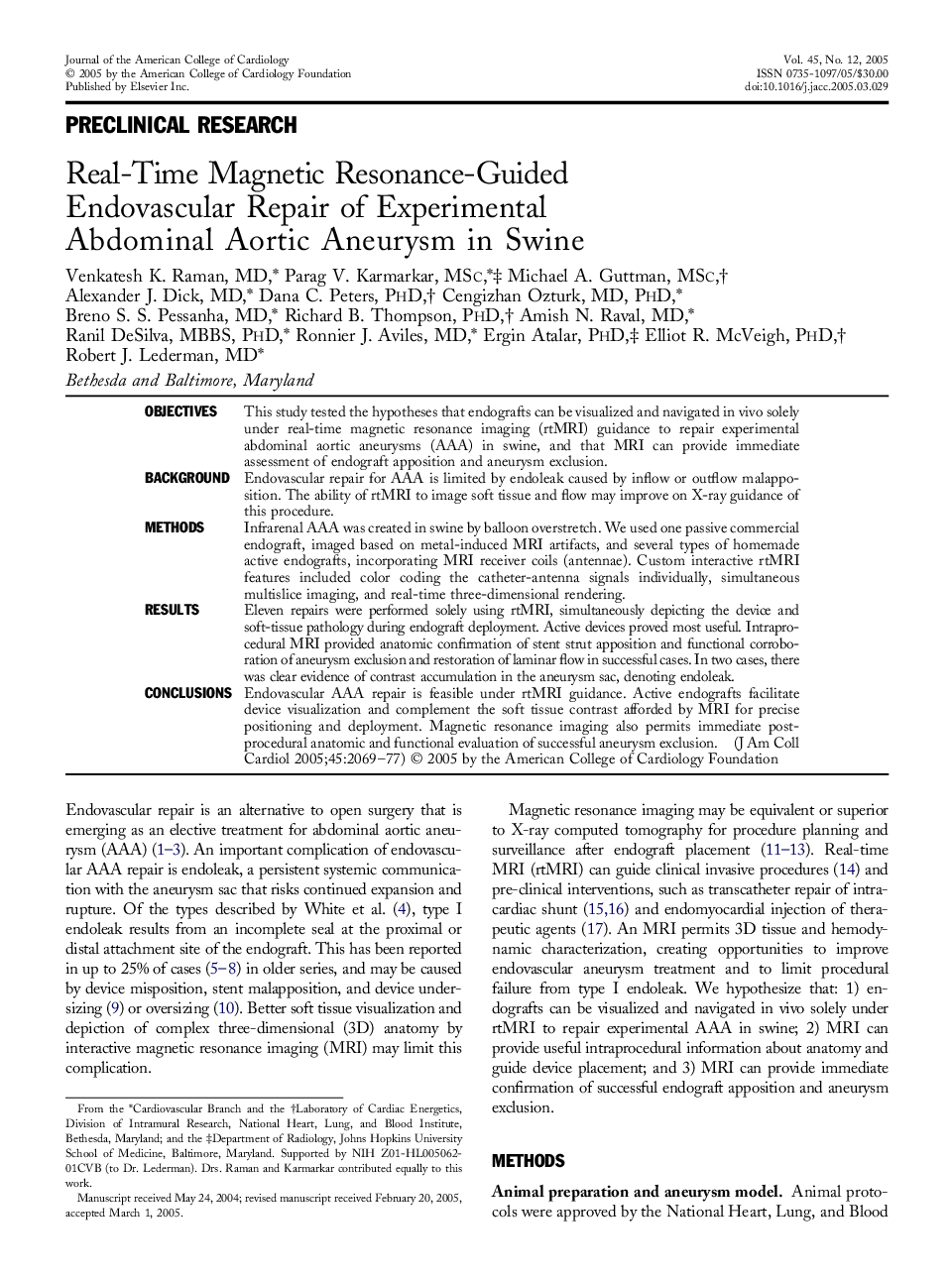| کد مقاله | کد نشریه | سال انتشار | مقاله انگلیسی | نسخه تمام متن |
|---|---|---|---|---|
| 2954530 | 1577540 | 2005 | 9 صفحه PDF | دانلود رایگان |

ObjectivesThis study tested the hypotheses that endografts can be visualized and navigated in vivo solely under real-time magnetic resonance imaging (rtMRI) guidance to repair experimental abdominal aortic aneurysms (AAA) in swine, and that MRI can provide immediate assessment of endograft apposition and aneurysm exclusion.BackgroundEndovascular repair for AAA is limited by endoleak caused by inflow or outflow malapposition. The ability of rtMRI to image soft tissue and flow may improve on X-ray guidance of this procedure.MethodsInfrarenal AAA was created in swine by balloon overstretch. We used one passive commercial endograft, imaged based on metal-induced MRI artifacts, and several types of homemade active endografts, incorporating MRI receiver coils (antennae). Custom interactive rtMRI features included color coding the catheter-antenna signals individually, simultaneous multislice imaging, and real-time three-dimensional rendering.ResultsEleven repairs were performed solely using rtMRI, simultaneously depicting the device and soft-tissue pathology during endograft deployment. Active devices proved most useful. Intraprocedural MRI provided anatomic confirmation of stent strut apposition and functional corroboration of aneurysm exclusion and restoration of laminar flow in successful cases. In two cases, there was clear evidence of contrast accumulation in the aneurysm sac, denoting endoleak.ConclusionsEndovascular AAA repair is feasible under rtMRI guidance. Active endografts facilitate device visualization and complement the soft tissue contrast afforded by MRI for precise positioning and deployment. Magnetic resonance imaging also permits immediate post-procedural anatomic and functional evaluation of successful aneurysm exclusion.
Journal: Journal of the American College of Cardiology - Volume 45, Issue 12, 21 June 2005, Pages 2069–2077